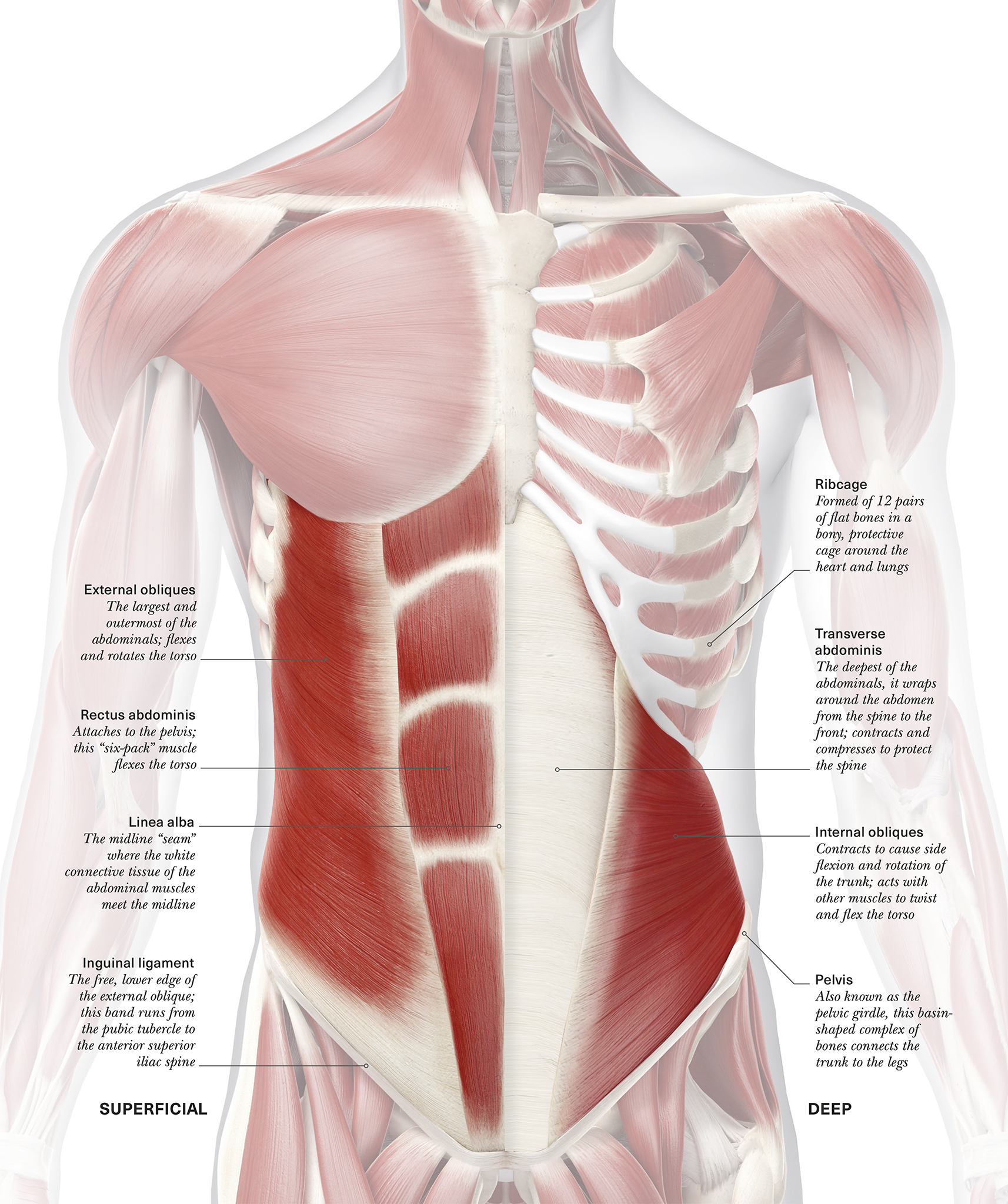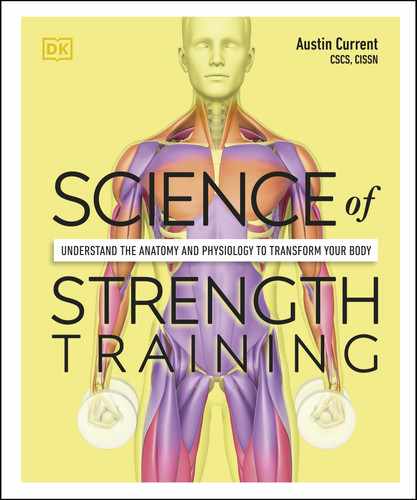ABDOMINAL EXERCISES
The main muscles responsible for movement in the abdominals are: the rectus abdominis (the “six pack” muscle); the external obliques and the internal obliques, both positioned at the sides of the torso; and the transverse abdominis, the deepest abdominal muscle.
The rectus abdominis (or RA) attaches to the sternum and the connective tissue of the ribs and pelvis. Both the external and the internal obliques attach to the ribs, pelvis, and linea alba—an area of connective tissue at the midline of the abdominal wall. The transverse abdominis (or TVA) attaches to the pelvis and the ribs, linea alba, and connective tissue of the lower back.
When flexing the trunk forward, the RA creates this movement but also contributes structural support to other abdominals. It can be trained using bodyweight or load with exercises such as crunches or hanging knee raises.
When flexing the trunk to the side (lateral flexion), your body uses the obliques, which also help in forward flexion and rotation. The obliques also act as antirotation and antiextension contributors for the trunk—keeping the spine safe and protected while adding stability to the torso.
The TVA functions as your internal “lifting belt,” adding compression or cinching forces to stabilize the torso and protect the spine.
All of these muscles also support respiration and provide general strength and structure to the torso.

n Double-tap image to read the labels
SUPERFICIAL
External obliques
The largest and outermost of the abdominals; flexes and rotates the torso
Rectus abdominis
Attaches to the pelvis; this “six-pack” muscle flexes the torso
Linea alba
The midline “seam” where the white connective tissue of the abdominal muscles meet the midline
Inguinal ligament
The free, lower edge of the external oblique; this band runs from the pubic tubercle to the anterior superior iliac spine
DEEP
Ribcage
Formed of 12 pairs of flat bones in a bony, protective cage around the heart and lungs
Transverse abdominis
The deepest of the abdominals, it wraps around the abdomen from the spine to the front; contracts and compresses to protect the spine
Internal obliques
Contracts to cause side flexion and rotation of the trunk; acts with other muscles to twist and flex the torso
Pelvis
Also known as the pelvic girdle, this basin-shaped complex of bones connects the trunk to the legs
“Strong abs lead to a healthy core, a protected spine, and reduced lower-back injury.”
